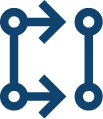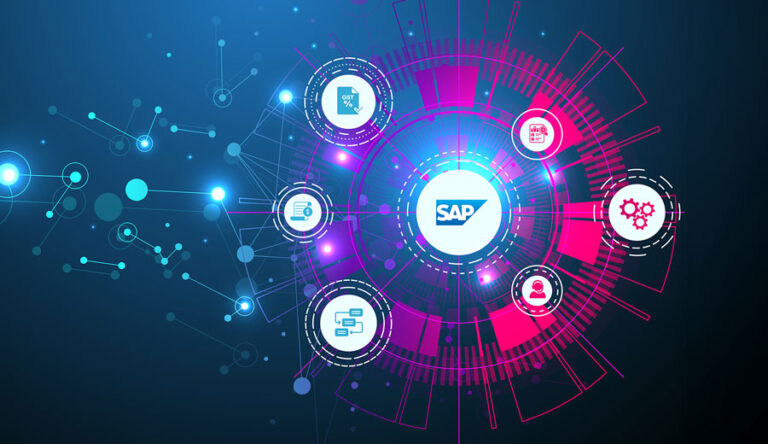Predictive analytics can be used by any industry to reduce risk, improve operations and increase revenue. For example in the financial industry where a lot of data and money are at stake. Predictive analysis can be used to detect fraud, reduce credit risk, increase cross-sell/upsell opportunities, and retain customers. Commonwealth Bank uses analytics in order to predict fraud activity for any transaction before an authorization is granted – within 40 milliseconds.
Predictive Analytics is gaining a lot of attention due to advances in technology such as Big Data and Machine Learning. According to the study by Facts & Factors, the Global Predictive Analytics market size is expected to increase by USD 5.7 Billion by 2026 at 24.5% CAGR.
Predictive analytics allows businesses to project future outcomes based on previous data and analytics techniques such as machine learning and statistical modelling. It helps generate forecasting results and trends more precisely than in past years.
A wide range of industries such as retail, manufacturing, supply chains, network management, financial services, healthcare can use predictive analytics to revolutionize their operations. They can optimize inventories, enhance customer engagement, and gain various other profit-building goals.
What is Predictive Analytics?
Predictive analytics uses historical data to analyze and build a predictive model that captures crucial trends. This predictive model is further compared to the present data that helps analyzing future outcomes and suggest optimal results.
Organizations like Amazon and Netflix use the predictive analytics marketing strategy to target users and provide a better user experience.
Example: Amazon uses a predictive marketing strategy to recommend products and services to users based on their past purchases and browsing history. With this analysis, Amazon increases its sales up to 30%. Therefore, Amazon plans to develop a tool to help deliver products to zones where orders were expected even before those orders were placed on the site. It reduces the time for delivering goods to customers.
Predictive Analytics Models
As predictive analytics analyze data and result into future outcomes, it is designed with complex models that come across refined results. These models are built with various algorithms and machine learning functionalities. It helps analyzing previous and present data that results in future outcomes. Different models are designed with different features that can fulfil specific requirements of those employing predictive analytics.
Let’s have a look at some standard predictive analytics models that are used by the businesses:
- Regression techniques use considerate relationships between variables.
- Decision trees use branching to show possibilities stemming from each outcome or choice.
- Neural networks utilize algorithms to figure out possible relationships within data sets.
How predictive analytics works
With the increase in demand for Big Data, it is required for professionals to have a good understanding of data science or business analysis. It helps them to learn how predictive analytics works.
Three essential requirements are required to start with predictive analytics strategies successfully.
- Data – Most organizations deal with the lack of reliable data to implement predictive analytics.
- Statistics – Businesses use regression analysis tools for predicting data which helps estimate the relationship between different variables.
- Assumptions – Organizations needs to make correct assumptions on data and have understanding of those assumptions. It is required to progressively monitor those predictions whether they are working or not. The basic state in predictive analytics is that the future will continue to imitate the past.
Organizations that can maintain relevant data, progressively work on the suitable statical model, and rigorously observe their assumptions will develop the most accurate future predictions and results.
Why is predictive Analytics Important?
Multiple organizations use predictive analytics tools to estimate the demand for their products and services to maximize their conversion rate and grow their business. Here we are discussing some key points that will help you understand why predictive analytics is important for your business.
- Improve Marketing Productivity: Using predictive analytical tools, businesses can drive the trends and outliers to make a better decision. They can efficiently analyze prospective customers with the previous purchase and recommend similar products and services. This can help the marketers to maximize their sales and increase the chances of getting good returns.
- Get a Competitive Advantage: Businesses can boost their operations with predictive analytical skills to develop intent-based personalization. By using an efficient predictive model can enhance business strength and can optimize customer needs. They can visualize competitors’ weaknesses.
- Understand Customers Requirement: Having an efficient predictive model helps businesses analyze all the structured and unstructured data and understand customer requirements. They can enhance their market by analyzing customers’ geographic and demographic data or the specific inputs of the prospective customers.
- Identify Areas of Attrition: By analyzing the areas of attrition with predictive analytical skills, businesses can identify why their customer switched to competitors. They can plan strategies at the initial stage and perform probable actions and gain back the lost customers.
- Determine New Revenue Opportunities: With the effective predictive model, businesses can obtain informative insights related to the customers. They can develop the buying patterns for their customers and provide them with promotional offers to build new revenue streams. By working on an identity management system, businesses can collect essential data of their customers, such as their location, number of logins, and timestrap. This approach can help them to figure out customer behavior and enhance their business growth.
How should an organization begin with predictive analytics?
Beginning with predictive analytics, businesses can start with a limited-scale project that can help them to minimize start-up costs and reduces the time before financial rewards. After implementing a small project, it is required to develop actionable insights for further progressive years.
Companies that are religiously investing their time in analyzing previous and present data can get beneficial results. It is essential to start with a small project and focuses on the pain area to minimize risk. It can limit start-up costs, reduce time frame and save money. Once the predictive model is successful, it only needs fine-tuning to sharpen actionable insights in the years to come.
Advantages of Predictive Analytics
One of the essential things of using predictive analytics is to analyze the data to make the more predictive results, maximize the business growth, and consider it the most reliable skill. When these skills are implemented, businesses can find ways to save and earn money, increase productivity, and plan for potential scenarios.
At the core of predictive analytics, its primary benefit is giving businesses the ability to minimize the required cost to forecast potential outcomes, environmental factors, competitive intelligence, and market conditions.
Some other benefits of predictive analytics are:
- Workforce planning and churn analysis
- Improve efficiency in operations
- Analysis of competitors
- Detecting fraud, improving pattern detection, and preventing criminal behavior
- Optimizing marketing campaigns by determining customer responses or purchases
Concluding Note
Predictive analytics uses statistical methods to forecast future outcomes, but it’s up to a business to interpret the results and act. That’s why it is important to have the right tool and team on-hand for any analytic project, especially one that involves prediction and forecasting.
Embee helps you optimize inventories, enhance customer engagement, and gain various other profit-building goals. It provides fully managed solutions that ensure predictive analysis are functioning by regular monitoring measures. Our data analytics team helps you recover critical data and workloads instantly to ensure business continuity. We aim to keep your team and customers connected to essential data and applications.

















































